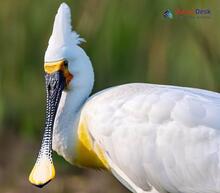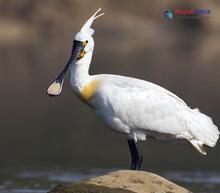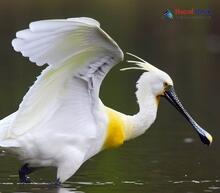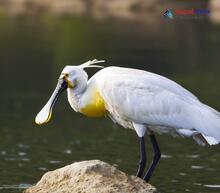The Platalea genus, commonly known as spoonbills, is a group of wading birds that are not only fascinating in appearance but also hold great scientific interest due to their unique taxonomy and evolutionary history. In this article, we will delve into the origin, taxonomy, and systematics of Platalea spoonbills, examining their evolution chain and genetic phylogeny. We will also discuss the species list, characteristics, and presence of these captivating avian creatures in Nepal.
Origin and Taxonomy
The Platalea genus comprises six species of spoonbills, which belong to the Threskiornithidae family. These wading birds are characterized by their large, flat, spatulate bills that resemble spoons—hence the name 'spoonbill'. Originating in the Late Miocene period around 11 million years ago (mya), these intriguing creatures have evolved through intricate evolutionary processes across time and adapted to various habitats across the globe.
Systematics and Evolution Chain
The taxonomic placement of Platalea within the Threskiornithidae family is quite complex—it shares a clade with the more commonly known ibises. Through genetic phylogeny studies of both mitochondrial DNA and nuclear genes, researchers have been able to trace the evolutionary relationships between different spoonbill species.
As per these studies, molecular evidence suggests that spoonbills diverged from ibises around 40 mya. However, fossil records indicate a relatively younger age for the separation between these two groups. The discrepancy between fossil findings and molecular timelines is an ongoing area of research for understanding spoonbill evolution.
Species List and Characteristics
There are six recognized species of Platalea:
1. African Spoonbill (Platalea alba)
2. Black-faced Spoonbill (Platalea minor)
3. Eurasian Spoonbill (Platalea leucorodia)
4. Royal Spoonbill (Platalea regia)
5. Roseate Spoonbill (Platalea ajaja)
6. Yellow-billed Spoonbill (Platalea flavipes)
Spoonbills are known for their distinctive bill shape that they use to sift through shallow water to catch fish, crustaceans, and other small aquatic invertebrates. They employ a sweeping motion in the water, capturing their prey as their sensitive bills come into contact with it.
Presence in Nepal
The Eurasian Spoonbill (Platalea leucorodia) is the only species of spoonbill recorded within Nepal. These migratory birds, which arrive during the winter months, can be observed primarily in the lowland Tarai regions of the country. They prefer wetlands, marshes, and riverine areas with shallow water, where they can easily hunt for food.
In conclusion, the Platalea genus offers profound insights into avian evolution and genetic diversity among wading birds. As more research is conducted on this fascinating genus, we will continue to unravel mysteries surrounding their taxonomy, systematics, and ecological niches. The presence of Eurasian Spoonbills in Nepal showcases the rich biodiversity of the region and emphasizes the importance of conservation efforts to preserve these unique birds' habitats.




